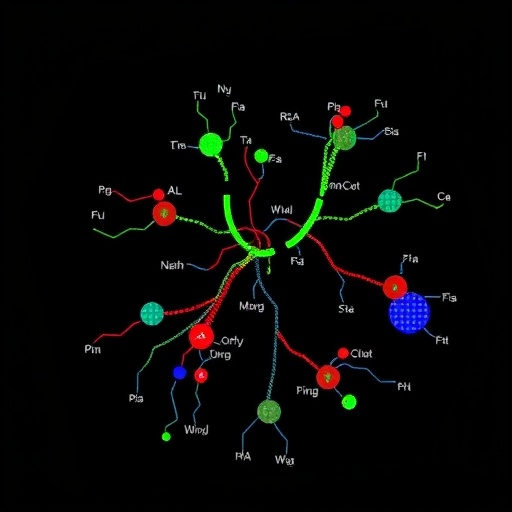In the relentless quest to conquer cancer, T cell immunotherapy has emerged as a beacon of hope, particularly for patients suffering from certain haematological malignancies. The fundamental principle behind adoptive T cell therapies lies in the genetic reprogramming of a patient’s own T cells to express transgenic antigen recognition receptors. These receptors, including chimeric antigen receptors (CARs) and T cell receptors (TCRs), empower the immune system to seek out and eliminate cancer cells with remarkable specificity. However, despite the undeniable promise of this approach, a host of formidable challenges remain, particularly in the treatment of solid tumors, which have stubbornly resisted effective T cell therapies.
Traditional methods for engineering T cells have relied heavily on CRISPR–Cas9 technology for gene editing, which involves creating double-strand breaks in DNA to introduce desired genetic modifications. While this approach has revolutionized genome editing, it carries the inherent risk of unintended genomic alterations such as chromosomal translocations and truncations. These off-target effects pose significant safety concerns and can compromise the therapeutic efficacy of the engineered T cells. The scientific community has therefore been actively pursuing next-generation genome editing techniques that can achieve precise nucleotide changes without these hazardous outcomes.
Enter CRISPR 2.0—the evolving frontier of gene editing that encompasses base editing and prime editing technologies. Unlike the conventional CRISPR–Cas9 system, base editors enable the conversion of individual DNA bases without creating double-strand breaks, drastically reducing undesired genomic rearrangements. Prime editing further extends this capability by allowing the installation of virtually any small genetic change, including insertions, deletions, and all twelve possible base-to-base conversions, with unparalleled precision and programmability. Together, these tools represent a paradigm shift in the precision engineering of cellular immunotherapies.
The application of CRISPR 2.0 in T cell engineering is poised to tackle some of the most persistent obstacles faced by current adoptive cell therapies. One of the critical barriers has been the limited repertoire of tumor antigens that can be safely and effectively targeted. By enabling precise and multiplexed genetic alterations, CRISPR 2.0 opens avenues for broadening this antigenic spectrum, allowing T cells to recognize and combat a wider range of cancer types, including those within notoriously refractory solid tumors.
Moreover, CRISPR 2.0 methods can be harnessed to enhance the intrinsic functionality of T cells. Through the introduction of carefully defined nucleotide substitutions, researchers can modulate signaling pathways, increase resistance to inhibitory tumor microenvironments, and prolong T cell persistence after infusion. Such refinements could translate into sustained and more robust anti-cancer responses, which are vital for achieving durable remissions in patients.
An additional advantage of employing base and prime editing technologies lies in their facilitation of streamlined manufacturing processes. Traditional T cell editing and expansion workflows are intricate and time-consuming, often involving multiple manipulations that increase production costs and the risk of contamination. The heightened precision and reduced off-target effects afforded by CRISPR 2.0 can simplify these processes, potentially accelerating therapy generation and making these treatments more accessible to patients worldwide.
Currently, the field is witnessing a surge in clinical trials employing these next-generation gene editing platforms to develop precisely engineered cellular therapies. These trials are investigating not only the safety and efficacy but also the full therapeutic potential of CRISPR-modified T cells in tackling a spectrum of haematological and solid malignancies. As data from these studies emerge, they will inform the optimization of protocols and underpin regulatory strategies to bring these advanced therapies into standard clinical practice.
Nonetheless, bringing CRISPR 2.0-based T cell therapies from the laboratory to the clinic is not without hurdles. Key among these is ensuring the fidelity of base and prime editors in the complex genomic environment of human T cells and guarding against off-target edits at both the DNA and RNA level. Comprehensive and sensitive detection methods are essential to monitor these events during manufacturing and prior to clinical use.
In addition, the immunogenicity of the engineered T cells themselves must be rigorously assessed. As gene editing introduces non-native proteins or sequences, the host immune system might mount an immune response not only against the cancer cells but also against the therapeutic T cells, which could undermine treatment efficacy. Techniques to mitigate such immune rejection are an active area of investigation.
Moreover, the inherent heterogeneity of tumors, especially solid tumors with immunosuppressive microenvironments, poses a significant challenge that CRISPR 2.0 aims to address. By fine-tuning T cell receptors and modifying inhibitory checkpoint pathways, these advanced editors may enable T cells to better infiltrate and survive within hostile tumor niches, thereby overcoming barriers that have stymied prior generations of T cell therapies.
The ethical and regulatory landscapes surrounding these transformative technologies are also evolving rapidly. Ensuring patient safety while fostering innovation requires robust governance frameworks, transparency in clinical trial design, and international collaboration to harmonize standards. Public perception and acceptance will be critical determinants in the widespread adoption of CRISPR-engineered cellular therapies.
As we stand on the cusp of this new era, the convergence of synthetic biology, genome editing, and immunotherapy promises to redefine cancer treatment paradigms. The refinement of CRISPR 2.0 technologies is more than a technical milestone; it signifies the potential to shift clinical outcomes dramatically for patients who have previously faced limited options.
Looking forward, an interdisciplinary approach that integrates computational biology, advanced gene editing, and immunology will accelerate the design of next-generation T cell products that are safer, more effective, and customizable on a patient-by-patient basis. Machine learning algorithms coupled with high-throughput screening may guide the identification of optimal edits that synergize to overcome tumor resistance mechanisms.
In this exciting landscape, the ongoing and future clinical evaluations of CRISPR 2.0-modified T cell therapies will provide crucial insights, not just on efficacy and safety but on broader questions such as durability of response, quality of life improvements, and long-term immunological memory against cancer.
Ultimately, the promise of CRISPR base and prime editing is to democratize cellular immunotherapy, making it a viable and potent weapon against a broad array of cancers. With continued innovation and careful stewardship, these next-generation editing tools stand poised to transform the future of cancer care, turning what was once considered science fiction into clinical reality.
Subject of Research: Genetic engineering of T cell immunotherapies using CRISPR base and prime editing technologies.
Article Title: Next-generation T cell immunotherapies engineered with CRISPR base and prime editing: challenges and opportunities.
Article References:
Petri, K., D’Ippolito, E., Künkele, A. et al. Next-generation T cell immunotherapies engineered with CRISPR base and prime editing: challenges and opportunities. Nat Rev Clin Oncol (2025). https://doi.org/10.1038/s41571-025-01072-4
Image Credits: AI Generated
Tags: CAR T cell therapies for cancerchallenges of T cell engineeringCRISPR 2.0 advancementsCRISPR technology in T cell therapygenetic reprogramming of immune cellshaematological malignancies treatmentsnext-generation genome editing techniquesprecision medicine in oncologysafety concerns in gene editingsolid tumors and immunotherapyT cell receptor modificationstargeted cancer treatments





